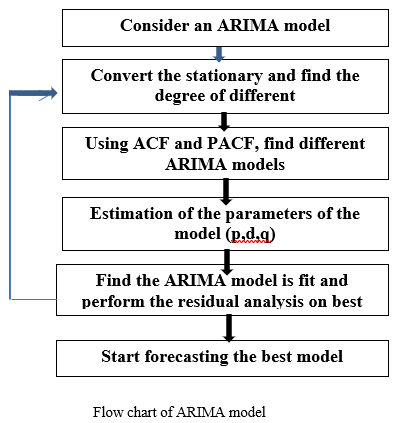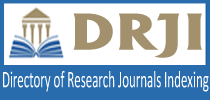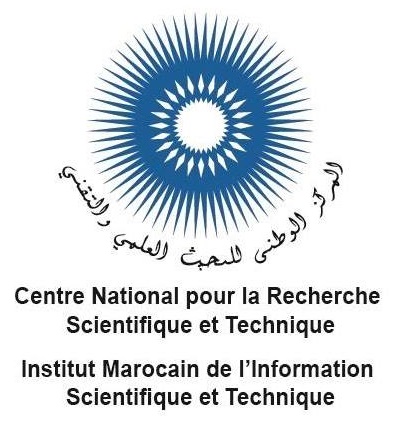A Prediction of Rainfall of Haifa Using MLR and ARIMA Models
Keywords:
Terraclimate , Precipitation , ARIMA , MLR , MinitabAbstract
This study was conducted to predict the rain fall of Haifa the third largest city of Israel with a population around 285,300 people, which is a part of a sizable metropolis with 962,500 inhabitants and is situated on a bay in the northeastern Mediterranean Basin. The city is a representative of a number of Mediterranean sub-climatic areas due to its distinctive sea-land meteorology and complex hilly topography.
In order to get the best fit based on the best distribution value, this work aims to develop combining strategies for rainfall prediction in Haifa based on ARIMA and MLR models. This will aid farmers in making agricultural decisions, hydrological department water storage decisions, and analysis of groundwater level decisions. It was conducted using of Modeling of monthly precipitation using MLA and ARMA including the best distribution graphic produced by the model and to find the best fit of various distributions displayed by the models which displaces the smallest value of AD. The data obtained and used in this study are monthly rainfall satellite data from Terraclimate using Haifa, the third largest city of Israel from 1958-2020 (62yrs) time interval.
Result shows that long-term continuous data forecasting, the ARIMA model outperforms the MLR models. By its efficiency and precision, ARIMA may be a more appealing option to MLR. As the numerous numbers show, there isn't much of a distinction comparing ARIMA and MLR models. The Logistic distribution plot is the best fit or recommended distribution. From the summary displaced, it can be seen from the numerous distribution plots used to decide which the best match for histogram exhibition is. The best-fit distribution plot has the lowest AD value.
Using precipitation as one of the factors to determine which distribution plot is the best as displaced in the summary table of the AD values of the various plots, it was evaluated that the best fit is the distribution function of the Probability Plot of ppt (mm) of Logistic parameter with the smallest AD value of 59.435 which has the lowest AD value in the Different parameter distribution plots
Downloads
References
Jakob, M. (2022). Globalization and climate change: State of knowledge, emerging issues, and policy implications. Wiley Interdisciplinary Reviews: Climate Change, e771.
Rolnick, D., Donti, P. L., Kaack, L. H., Kochanski, K., Lacoste, A., Sankaran, K., ... & Bengio, Y. (2022). Tackling climate change with machine learning. ACM Computing Surveys (CSUR), 55(2), 1-96.
Abu Bakar, Nashirah, and Sofian Rosbi. "Autoregressive integrated moving average (ARIMA) model for forecasting cryptocurrency exchange rate in high volatility environment: A new insight of bitcoin transaction." International Journal of Advanced Engineering Research and Science 4.11 (2017): 130-137.
Box, G. E., & Pierce, D. A. (1970). Distribution of residual autocorrelations in autoregressive-integrated moving average time series models. Journal of the American statistical Association, 65(332), 1509-1526.
Birinci, V., & Akay, O. (2010). A study on modeling daily mean flow with MLR, ARIMA and RBFNN. Proceedings of BALWOIS: Water observation and information system for decision support. Ohrid, Republic of Macedonia, 25-29.
Solazzo, Caroline, et al. "Identification of the earliest collagen-and plant-based coatings from Neolithic artefacts (Nahal Hemar cave, Israel)." Scientific reports 6.1 (2016): 1-11.
Cigizoglu, H. K. (2005). Generalized regression neural network in monthly flow forecasting. Civil Engineering and Environmental Systems, 22(2), 71-81.
Jain, S. K., Das, A., & Srivastava, D. K. (1999). Application of ANN for reservoir inflow prediction and operation. Journal of water resources planning and management, 125(5), 263-271.
Muklada, H., Gilboa, Y., & Friedler, E. (2016). Stochastic modelling of the hydraulic performance of an onsite rainwater harvesting system in Mediterranean climate. Water Science and Technology: Water Supply, 16(6), 1614-1623.
Ashbel, D. (1970). Climate of Haifa (extended area). Hebrew University: Jerusalem) [In Hebrew].
Bojar, W. (2013). MACSUR TradeM Workshop Exploring new ideas for trade and agriculture model integration for assessing the impacts of climate change on food security. FACCE MACSUR Reports, 1(1).
Achilea, O., Ronen, E., & Elharrar, G. (2005). Haifa Nurti-Net–a comprehensive crop Nutrition software, operated over the web. EFITA/WCCA, 25-28.
Paz, S., Tourre, Y. M., & Planton, S. (2003). North Africa?West Asia (NAWA) sea?level pressure patterns and their linkages with the eastern Mediterranean (EM) climate. Geophysical research letters, 30(19).
Depietri, Y., & Orenstein, D. E. (2018). Tradeoffs between regulating and cultural services as a sources of fire risk in Haifa. In Conference Proceedings–Long Paper (Barcelona).
Ghanem, J., Sadaqa, H., & Alkerashi, F. (2015). Evaluation and Redesign of Haifa Street.
Negev, Maya, Motti Zohar, and Shlomit Paz. "Multidimensional hazards, vulnerabilities, and perceived risks regarding climate change and Covid-19 at the city level: An empirical study from Haifa, Israel." Urban Climate 43 (2022): 101146.
Abu Bakar, N., & Rosbi, S. (2017). Autoregressive integrated moving average (ARIMA) model for forecasting cryptocurrency exchange rate in high volatility environment: A new insight of bitcoin transaction. International Journal of Advanced Engineering Research and Science, 4(11), 130-137.
Salomons, Elad, et al. "Optimizing the operation of the Haifa-A water-distribution network." Journal of hydroinformatics 9.1 (2007): 51-64.
Schwerhoff, Gregor, et al. "Leadership in climate change mitigation: consequences and incentives." Journal of Economic Surveys 32.2 (2018): 491-517.
Mehling, Wolf E., et al. "The multidimensional assessment of interoceptive awareness, version 2 (MAIA-2)." PloS one 13.12 (2018): e0208034.
Lenzi, Dominic, et al. "Equity implications of net zero visions." Climatic change 169.3 (2021): 1-15.
Dechezleprêtre, Antoine, and Misato Sato. "The impacts of environmental regulations on competitiveness." Review of Environmental Economics and Policy (2020).
Giorgi, Filippo, and Piero Lionello. "Climate change projections for the Mediterranean region." Global and planetary change 63.2-3 (2008): 90-104.
DeSoto, Lucía, et al. "Low growth resilience to drought is related to future mortality risk in trees." Nature communications 11.1 (2020): 1-9.
De Melo, Jaime, and Jean-Marie Grether. "Globalization and Dirty Industries: Do Pollution Havens Matter?." Challenges to Globalization: Analyzing the Economics (2004): 167-205.

Downloads
Published
How to Cite
Issue
Section
ARK
License
Copyright (c) 2023 Larry T Woyea, Huseyin Gokcekus, Youssef Kassem

This work is licensed under a Creative Commons Attribution 4.0 International License.
Copyright on any article in the International Journal of Engineering and Applied Physics is retained by the author(s) under the Creative Commons license, which permits unrestricted use, distribution, and reproduction provided the original work is properly cited.
License agreement
Authors grant IJEAP a license to publish the article and identify IJEAP as the original publisher.
Authors also grant any third party the right to use, distribute and reproduce the article in any medium, provided the original work is properly cited.
Most read articles by the same author(s)
- Hüseyin GÖKÇEKU, Youssef Kassem, Henok Seman, Abubakar Ali G., Review on waste water reuse for irrigation towards achieving environmental sustainability , International Journal of Engineering and Applied Physics: Vol. 3 No. 1: January 2023
- YOUSSEF KASSEM, Hüseyin Gökçeku?, Qand Abbas Salih Furaiji, Evaluating the performance of online simulation tools for grid-connected rooftop solar systems in Baghdad, Iraq , International Journal of Engineering and Applied Physics: Vol. 2 No. 2: May 2022


















